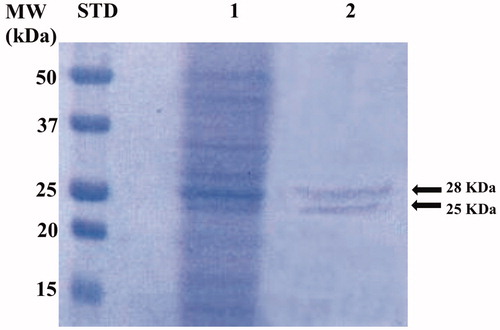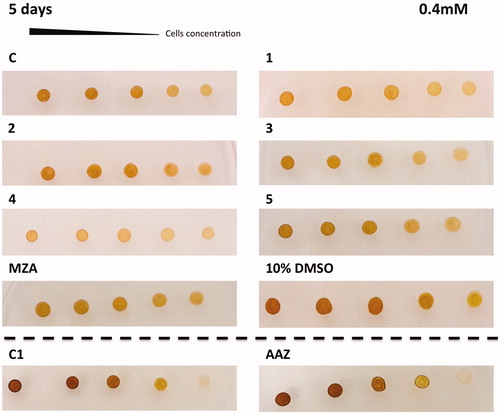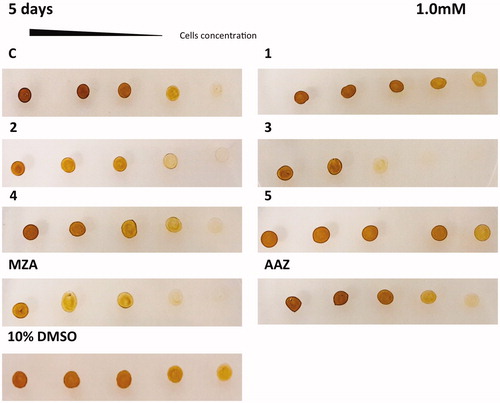Figures & data
Figure 1. (A) The active site of hCA II as representative of hCA isoforms. The catalytic triad is indicated with the residues: H94, H96 and H119 and (B) The catalytic site of the β-CA from P. tricornutum (PtLCIB4). The metal (yellow sphere) is coordinated by two Cys (C46 e C126) and one His (H102) residues and one water molecule (red sphere).

Figure 2. Sulphonamide compounds investigated for their effect on the growth of P. tricornutum cells.

Table 1. The lipophilicity of the seven sulphonamides used in the present study.
Figure 3. SDS-PAGE of the whole CAs purified by P. tricornutum cellular culture. Lane STD, molecular markers, MW starting from the top: 50, 37, 25, 20, and 15 kDa; Lane 1, diatom cell extract; Lane 2, purified whole CAs from the affinity column purification.

Table 2. Inhibition data with the sulphonamides reported here of the two human isoforms, hCA I and hCA II, and the diatom CAs, PtrCAs.
Figure 4. Diatom cells were spotted on the agar plates containing 0.4 mM of each sulphonamide inhibitors. Panel containing the agar with the inhibitor has been indicated with the acronym of the inhibitor used. The panel C1 and AAZ are separated by the other groups because obtained from a different set of experiments. Legend: C and C1, panels with the plate free of the inhibitor; 10% DMSO, panel with the plate inoculated with 10% DMSO; Panels 1, 2, 3, 4, 5, MZA, AAZ, plates with the sulphonamide inhibitors; Number of cells going from left to right: 2.0 × 107; 1.5 × 107; 1.0 × 107; 0.75 × 107 and 0.5 × 107. Diatom cell survival was monitored after five days under normal light conditions and 18 °C. The disappearance of the diatom colonies evidences the inhibitor effect of the CAIs.

Figure 5. Diatom cells were spotted on the agar plates containing 1.0 mM of each sulphonamide inhibitors. Legend of is the same as except for the AAZ panel, which, here, is part of the same set of experiments. The disappearance of the diatom colonies evidences the inhibitor effect of the CAIs.

